Fantasy Baseball: American League LABR Auction Recap

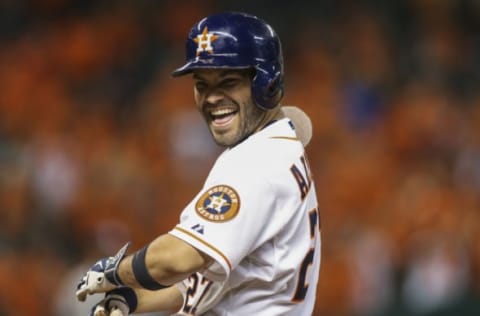
The fantasy baseball industry’s highest-profile expert leagues drafted this past weekend. Here’s how the AL LABR auction broke down.
Arguably the most famous expert fantasy baseball league(s), the League of Alternative Baseball Reality (LABR), held their annual auction drafts this past weekend in Phoenix. Now in its 24th year, LABR has set the standard by which most other auctions are held.
The league is comprised of 12 teams owned by experts from around the industry. The rosters are comprised of 23 players – 14 hitters and nine pitchers. Teams accumulate stats in the standard five hitting (average, home runs, RBI, runs, stolen bases) and five pitching (wins, saves, strikeouts, ERA, WHIP) rotisserie categories.
Most importantly, an auction is used instead of the typical draft format to which you may be accustomed. Each owner has $260 to spend on their 23-man active roster (a six-round supplemental draft was held after the auction for bench spots). In drafts, only a few people may have a shot at the best players, and if they do, they won’t pick again for a while. In an auction, every team has an equal shot at every player. For example, one American League owner was able to snag Carlos Correa, Miguel Cabrera, Chris Sale and Yu Darvish, but used up more than half of his budget to do so.
While LABR does have a league that uses players from both the American and National Leagues, the leagues that garner the most attention are the single-league formats. On Saturday the AL-Only draft was held, and on Sunday the NL-Only draft was held. I joined my first auction league in 2002, and have used the AL-Only results to shape what I might be able to expect in my draft.
168 hitters and 108 pitchers were selected. Considering there are only 135 lineup spots when all 15 American League teams are playing, some platoon and bench players have to be used to fill out a roster. Similarly, there are only 90 starting pitchers and 15 closers, so the best middle relievers can have value here.
The results of each auction can be found online, so I won’t list out what each player went for. Instead, we’ll go through some trends that jumped out at each position so you know what you might be able to expect in your auctions this year. This column will cover the American League.
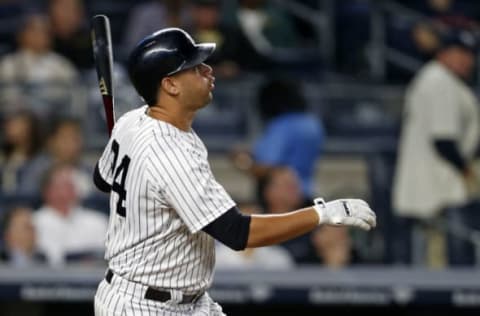
Catchers
Every team must have two catchers, so 24 catchers were drafted. Some simple math tells you that at least nine backup catchers needed to be selected! Furthermore, in order to qualify for a position, a player must have had at least 20 appearances at that position in 2016, so someone like Blake Swihart couldn’t be drafted as a catcher.
Two catchers eclipsed the $20 barrier, with Gary Sanchez leading the way at $23 and Jonathan Lucroy close behind at $21. Only eight catchers went for more than $10, and no owner spent double digits on both catchers. Two teams spent the minimum $1 on both of their catchers. This is an okay place to save money in a draft, but note that you’re putting yourself in a hole by starting off with two players who may only play in a third of their teams’ games.
One of the most intriguing bids was Wilson Ramos for $5. He’s coming off a breakout year, but nobody is quite sure how long he’ll stay on the disabled list to start the year. If he’s able to come back as a designated hitter in May, this will be a bargain. If he’s slow to recover and remains sidelined through much of the summer, this could be a waste of a roster spot. I think $5 could be a great value.
If you’re looking for insight into position battles, consider that Sandy Leon went for $5 while his competition for his role as Boston’s backstop went for a combined $4. Swihart was taken for $3 (though again, not as a catcher) and Christian Vazquez went in the dollar derby.
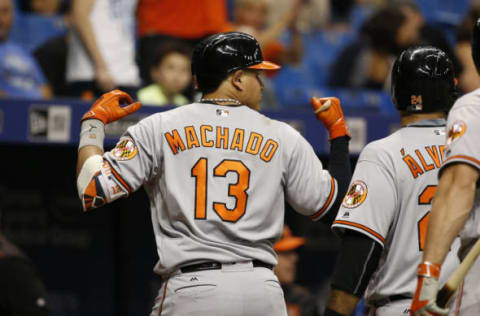
Corner Infielders
Each team selects a first baseman, a third baseman and a corner infielder who can play either position. Many teams often will choose to fill their utility slot (any batter) from one of these positions.
Third base was incredibly deep. The bidding for a whopping 12 players at the position went higher than $15. Even Yoan Moncada, who isn’t guaranteed to begin the season in the majors with the White Sox despite their release of Brett Lawrie, was sold for $14. Manny Machado, who also holds shortstop eligibility, easily paced the pack at $38. Josh Donaldson followed at $31, and four players drew winning bids at exactly $24.
Miguel Cabrera at $34 and Edwin Encarnacion at $30 led the way among first basemen. If you were looking to this draft to get a read on who may win some of the big position battles or platoon advantages this spring, some of the results may be deemed inconclusive. For the Mariners at first base, both Dan Vogelbach and Danny Valencia went for $8. Meanwhile for the Yankees at first base/DH, Matt Holliday went for $13 (as an outfielder) while Chris Carter and Greg Bird followed close behind at $11.
Owners seemed concerned enough about Luis Valbuena cutting into C.J. Cron’s playing time to cap Cron’s bidding at $12, but not enough to bring Valbuena’s price above $2. Meanwhile in Boston, Pablo Sandoval went for $9 while his main competition at third base, Brock Holt, went in the reserve rounds.
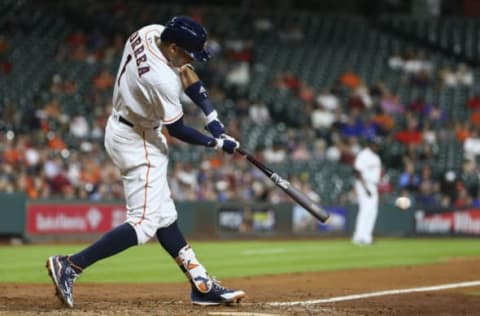
Middle Infielders
Similar to corner infielders, each team selects a second baseman, a shortstop and a middle infielder who can play either position. For the first time since 2012, Mike Trout was not the most expensive player in the draft. That honor went to Jose Altuve, who was the first player off the board at a shocking $45.
Robinson Cano ($31) and Brian Dozier ($30) also crossed the $30 threshold at second base. Seattle’s Jean Segura, who qualifies at both second base and shortstop, went for $26 and was the priciest player among newcomers to the American League.
Shortstop had even more star power at the top. In addition to Manny Machado at $38, Carlos Correa ($37), Francisco Lindor ($30) and Xander Bogaerts ($29) all went for more than the third-highest outfielder. These four players, all younger than 25, will certainly be fascinating to watch as they continue to develop. Any one of them could be the most valuable at the position in 2017. I personally would bid the most for Correa, but Lindor has the best chance to exceed his LABR auction value.
As previously mentioned, Yoan Moncada went for $14 as a third baseman. While it won’t be long before he patrols second base in Chicago, the incumbent Tyler Saladino went for $6 and Yolmer Sanchez (formerly Carlos) was selected for $1. The Royals have a plethora of options at second base, none of them particularly intriguing. However, in a league that uses only AL players, a boring starter is still a starter nonetheless. Raul Mondesi was the favorite option here for his speed, going at $6. Whit Merrifield ($2), Cheslor Cuthbert ($1 as a third baseman) and Christian Colon (reserve round) did not generate much interest.
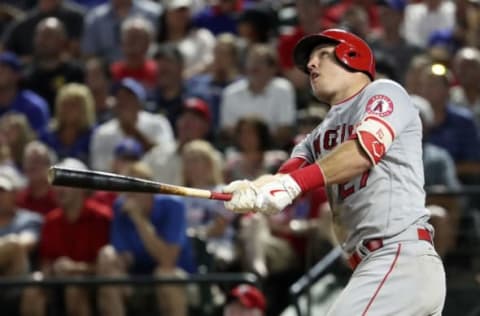
Outfielders
The outfield is pretty straightforward here: each team selects five. Mike Trout predictably led the way, going for $42, while Mookie Betts was not far behind at $39. From here, though, there was a considerable dropoff to Nelson Cruz at $28. Bidding on 14 players reached $20, including Jose Ramirez, who also qualifies at third base.
Andrew Benintendi earned the distinction of most expensive rookie. As a polished player in a potent lineup, he went for $20, the same as established veteran Adam Jones. Bidding on one-dimensional players did not get out of hand. Power hitter Mark Trumbo sold for only $23 despite leading baseball in home runs in 2016, while speed threats Rajai Davis ($17), Jarrod Dyson ($16), Ben Revere ($9) and Mallex Smith ($8) all went for less than they’ll probably earn on account of a scarcity of stolen bases.
The market was bullish on Kevin Kiermaier ($20), who took steps in an injury-riddled year last season towards showing he is more than just a defensive wizard in center field. Meanwhile, there was little faith placed in Michael Brantley returning at full strength. His bidding came to a grinding halt at $7. The experts were slightly more confident in Shin-Soo Choo, who went for $10.
Boston’s Killer B’s of Betts, Benintendi and Jackie Bradley ($17) was the most expensive outfield unit at a combined $76. On the other end of the spectrum, the team to which Boston lost in the ALCS, Cleveland, had one of the least valued outfield groups. The collection of Brantley, Tyler Naquin and Lonnie Chisenhall went for a combined $19, the same as Byron Buxton.
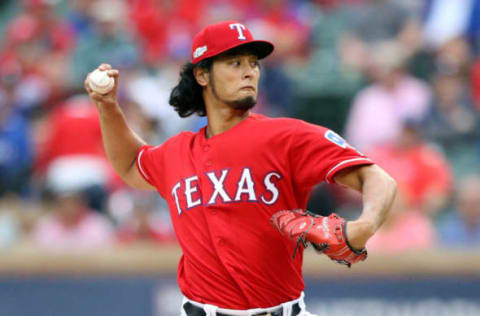
Starting Pitchers
Each team drafts nine pitchers, but there is no requirement for the number of starters vs. the number of relievers. You just have to end the season with at least 950 innings pitched. Traditionally only about 30 percent of the $260 budget is spent on hitting, despite 39 percent of the roster spots being allocated to pitchers. This year was no exception, with a 69/31 split between offense and pitching.
Pitching tends to be more volatile than hitting, so teams are willing to pay more for the certainty that comes with hitting. Of all the pitching categories, strikeouts would seem to be most consistent from year to year. Fittingly, the seven starting pitchers who garnered bids of $20 or more are as likely as any to be the top seven strikeout pitchers in the league: Yu Darvish ($30), Chris Sale ($30), Corey Kluber ($29), Chris Archer ($25), Justin Verlander ($24), Carlos Carrasco ($22) and Cole Hamels ($21).
That’s right: coming off a season where he had an ERA north of 4.00 and only nine wins, Chris Archer was the fourth most expensive pitcher. He has averaged more than 240 strikeouts over the past two seasons and has never been on the disabled list, which are two things fantasy baseball aficionados love. Still, this seems like a significant overpay compared to where other starters landed. Would you rather have Archer and Matt Andriese ($5) as your top two starting pitchers, or Dallas Keuchel and David Price ($14 each) for $2 less?
That’s right, injury concerns absolutely plummeted Price’s stock, and this is even after a second opinion concluded that he doesn’t need surgery. Even if Price were to miss the first month of the season, he would easily be able to return more than $14 of value. Having said that, owning Price may not be for the faint of heart.
The same team that drafted Keuchel and Price also happened to draft Felix Hernandez at $13, the same price that Ian Kennedy fetched elsewhere. If Hernandez has anything left in the tank, he’ll certainly be profitable at that rate. After Kennedy, other pitchers who rely on the strikeout to provide their value included Carlos Rodon ($12) and Blake Snell ($9). Personally, I would take either Rodon or Snell (both of whom were born in the same week in December 1992) before I looked at Kennedy at the same price.
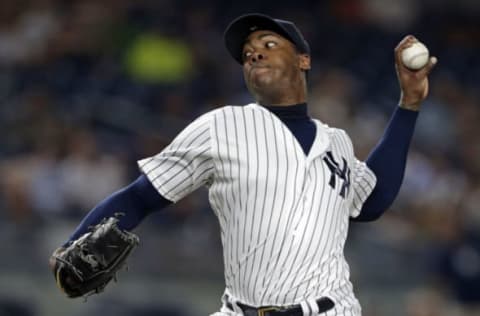
Relief Pitchers
Only two relief pitchers went off the board for more than $20: Aroldis Chapman ($23) and Zach Britton ($21). The value of closers depends largely on the kind of league you’re in. The more categories you have, the less valuable the save becomes. The auction league I’m in that I mentioned earlier is an old-school 4×4 league (runs and strikeouts are excluded as categories), so it becomes more important to pay for saves. As such, any available closer at the auction (we have a keeper league, so not every player is available every year) will go for at least $30.
If you find the price of closers going for much more than what they went for in the LABR draft, it might be best to divert your resources elsewhere. If people are overspending in one area, that means there must be value elsewhere. It’s like facing a double-team in basketball: the defense must be leaving someone open. The best finishes I’ve had in my league came in the years where people paid too much for closers and I spent more on starting pitching and/or the best hitters.
More from Call to the Pen
- Philadelphia Phillies, ready for a stretch run, bomb St. Louis Cardinals
- Philadelphia Phillies: The 4 players on the franchise’s Mount Rushmore
- Boston Red Sox fans should be upset over Mookie Betts’ comment
- Analyzing the Boston Red Sox trade for Dave Henderson and Spike Owen
- 2023 MLB postseason likely to have a strange look without Yankees, Red Sox, Cardinals
But enough about me. In LABR, even established closers such as David Robertson ($14) and Francisco Rodriguez ($13) went in the low teens. And when Robertson gets traded? The same team who bought Robertson bought Nate Jones for $8.
Murkier closer situations abound. Cam Bedrosian ($8) was a clear favorite among Angels relief options, but Oakland’s bullpen was much more difficult to pin down. Ryan Madson ($5), Santiago Casilla ($3), Ryan Dull ($3) and Sean Doolittle ($2) all had more than minimum bids. No Twins reliever went for more than $4, but when the incumbent is Brandon Kintzler, that’s to be expected.
If you’re wondering about established middle relievers/setup men, both Andrew Miller ($14) and Dellin Betances ($9) commanded relatively hefty price tags. Both ended up on the same team.
Larry Schechter won the AL LABR league in 2016. He committed a cardinal sin of leaving $4 on the table and appears poised to finish at or near the bottom in batting average, but based on post-auction rosters I wouldn’t be surprised to see him contending for the crown again.